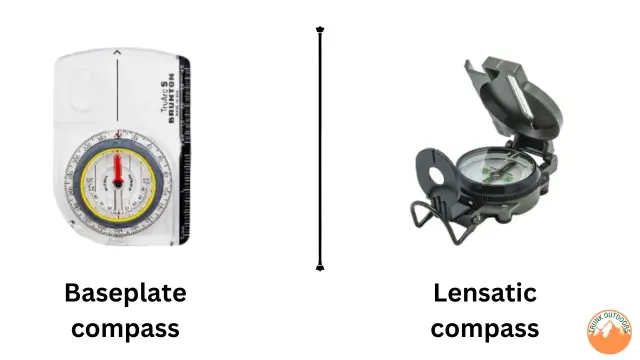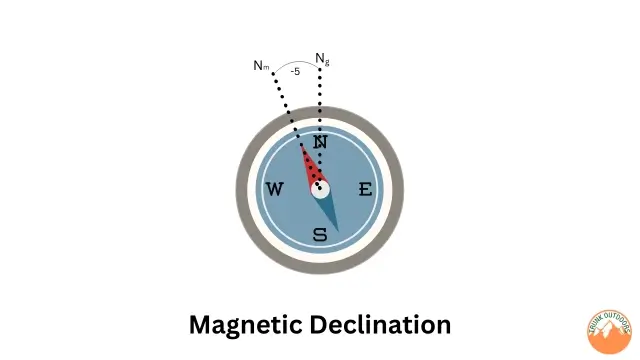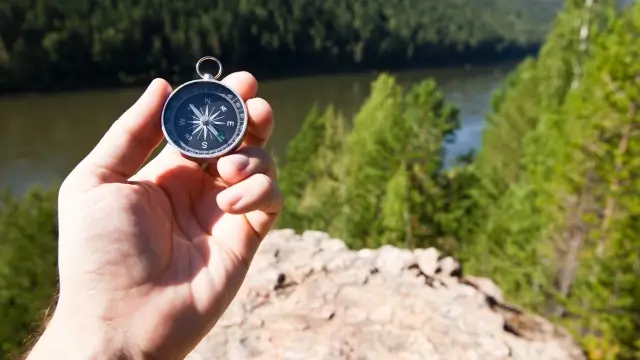How to Use a Compass Without a Map
Navigating the wilderness without a map may seem daunting, but fear not! With the right skills and tools, finding your way is possible. One essential tool for any outdoor enthusiast in this situation is a compass.
In this comprehensive guide, we’ll explore how to use a compass without a map. You’ll find detailed information on its parts, functionality, and techniques for navigation.
By mastering these skills, you can confidently explore the great outdoors while minimizing the risk of getting lost.
So, let’s dive in and discover how to effectively utilize this equipment when maps or GPS are not available.
Parts of a Compass
To effectively use a compass without a map, it’s important to understand its various components. A compass consists of several key parts that work together to provide accurate navigation:
- Baseplate: This is the flat, transparent plate that serves as the foundation for the compass. It often includes rulers and scales for measuring distances on maps.
- Housing: The housing is a capsule that contains the magnetic needle. The liquid inside the capsule reduces friction, which allows the needle to move smoothly.
- Needle: The needle is magnetized and aligned with Earth’s magnetic field. It points towards magnetic north, allowing you to determine your direction.
- Direction-of-Travel Arrow: Located on the baseplate, this arrow indicates the direction in which you want to travel.
- Bezel Ring: The bezel ring surrounds the housing and can be rotated to align with different degrees or markings on the baseplate.
- Orienting Arrow and Lines: These line show you where to point your compass when you want to go somewhere.
Knowing what each part of a compass does will help you use it well when you don’t have a map.
Types of Compasses

When choosing a compass for navigating without a map, consider whether you prefer a baseplate or a lensatic compass.
- Baseplate compasses are lightweight, compact, and ideal for general navigation purposes.
- Lensatic compasses are stronger, have special glasses to see better, and are often used by soldiers or people who are good at finding their way.
How to Use a Compass Without a Map
Now that we understand the parts of a compass, let’s delve into how it actually works. Here are the key steps to effectively use a compass without a map:
- Hold and Align the Compass: Ensure that you hold the compass flat in your hand and keep it level. This prevents any interference from metal objects that could affect its accuracy.
- Read and Set a Bearing: Turn the round part of the compass until the word North on it matches with the red part of the needle. This shows you where you want to go.
- Follow the Direction-of-Travel Arrow: Make the arrow on the flat part of the compass point to where you want to go or the way you want to walk.
- Walk in Alignment: Begin walking while keeping the arrow aligned with the compass needle. This ensures you stay on course towards your intended destination.
Don’t forget, as you walk, look at your compass often to make sure you are going the right way and change it if you need to. Looking at things like trees or hills will help you stay on course.
Magnetic Declination: Accounting for Variation
Understanding and accounting for magnetic declination is crucial when using a compass without a map.
Magnetic declination means the angle between your compass needle and the real north (the direction towards the North Pole). Here are some things you should know:

- Define Magnetic Declination: Magnetic declination varies depending on your location on Earth. It can range from a few degrees to several dozen degrees. Knowing the correct declination value for your area is essential for accurate navigation.
- Find the Correct Declination Value: You can find the specific declination value for your location by looking at topographical maps, online resources, or asking local authorities. It’s important to use up-to-date information as magnetic north changes over time.
- Adjust Your Compass: Once you have determined the correct declination value, change your compass the right way. Some compasses have a round part that you can turn to match the difference, while others may have a special line just for changing the difference.
By accounting for magnetic declination, you ensure that your compass readings align with true north rather than magnetic north, providing more accurate navigation results.
Don’t forget to check the difference again as it moves over time because of changes in Earth’s magnet. This will help you stay on course when you use a compass without a map.
More reading: How to Stay Safe from Wildlife while Camping?
Navigating a Walk With Only a Compass
When you find yourself without a map, you can still navigate your way through the wilderness. Here are the steps to successfully navigate a walk using only a compass:
- Understand Basic Compass Directions
Familiarize yourself with the cardinal directions – North, South, East, and West. Remember that the compass needle always points to magnetic North.
- Set a Bearing
Decide on the direction you want to travel relative to magnetic North. You can express this as a number of degrees (e.g., 45 degrees to the East).
- Hold the Compass Correctly
Hold the compass flat in your hand and ensure it remains level. Keep it away from any metal objects that could interfere with its accuracy.
- Aim and Walk
Point the direction-of-travel arrow on the baseplate directly at your target destination or desired direction of travel. Begin walking while keeping the arrow aligned with the compass needle.
- Keep Track of Distance
If you have an approximate distance to cover, keep track of it using natural landmarks or by counting paces (steps). This will help you estimate how far you’ve traveled.
- Use Handrails and Landmarks
Whenever possible, follow natural features such as rivers, roads, or prominent landmarks that can act as guides along your route.
Getting “Un-lost” With Only a Compass (No Map)
Even with the best navigation skills, there may be times when you find yourself disoriented or facing unexpected obstacles.
In such situations, it’s crucial to know how to get “un-lost” using only your compass. Here are some strategies to help you find your way back or reach safety:
- Retrace Your Steps: If you realize you’ve gone off course, retrace your steps by reversing your path until you reach a familiar landmark or location.
- Triangulate Your Position: Use multiple landmarks in your surroundings to triangulate your position. Take bearings on at least three known landmarks and plot them on an imaginary map in your mind to determine where you might be located. Read this article to learn how to triangulate.
- Follow Cardinal Directions: If you don’t know where you are but you know which way is safe or where people are, go one of the cardinal direction (north, south, east, or west) until you see something you know or get to a place you know.
- Use Back Bearings: Utilize back bearings to reverse your course if necessary. Take a bearing from where you currently are back towards a previous known point and walk in that direction until you regain familiarity.
- Find North-South Lines: In the absence of a map, use your compass needle pointing north and the travel arrow pointing south as references to identify north-south lines on topographical maps or other sources of information if available.
Using Natural Clues for Navigation

When you don’t have a map or access to a compass, there are still natural clues in the environment that can help you find your way. Here are some methods to utilize natural clues for navigation:
- Pay Attention to the Sun: In the absence of a map, the sun can be used as a general reference point for directions. The sun rises in the East and sets in the West. Additionally, around midday, when the sun is at its highest point, it is generally towards the South in most locations.
- Observe the Stars: At night, you can use celestial bodies like stars to find your general direction. The North Star (Polaris) is a reliable reference point in the Northern Hemisphere as it aligns with true north on your compass. Locate Polaris by finding the Big Dipper constellation and using its two outermost stars to draw an imaginary line that points towards Polaris.
- Be Cautious and Aware: When navigating without a compass or map, it’s important to be cautious and aware of your surroundings. Look for other natural indicators such as prevailing winds, patterns of vegetation growth (such as moss on trees indicating north), or animal trails that may lead towards water sources or human settlements.
Using only things from nature is not as good as using a compass or map, but these ways can help you when you have nothing else. Don’t forget to look at what’s around you and use many things together for better directions.
More reading: Solo Camping Tips for Women
Conclusion: Mastering Compass Navigation Without a Map
In conclusion, learning how to use a compass without a map is an essential skill for outdoor enthusiasts.
By knowing the parts of a compass, how it works, changing it for the difference, and trying out directions, you can find your way in new places.
Using a compass without a map means holding and turning the compass right, choosing where to go, walking the same way as the arrow, and counting how far you go using things you see or steps.
If you get lost or have problems, things like going back, finding where you are with many things you see, going one of the main ways, using back arrows, and finding north-south lines can help you get back or be safe.
Also, when you don’t have other things to help you, things from nature like where the sun is and how it moves during the day or looking at stars at night can show you which way to go.
Don’t forget to do these things often to get better. Learn how much your compass needle is different for where you are and check it again. Be careful and look at what’s around you when you use things from nature for directions.
For more things to learn about using a compass without a map, think about books on how to live in the wild or classes on finding your way by outdoor groups. With hard work and practice, you can be good at finding your way in the wild using only a compass.